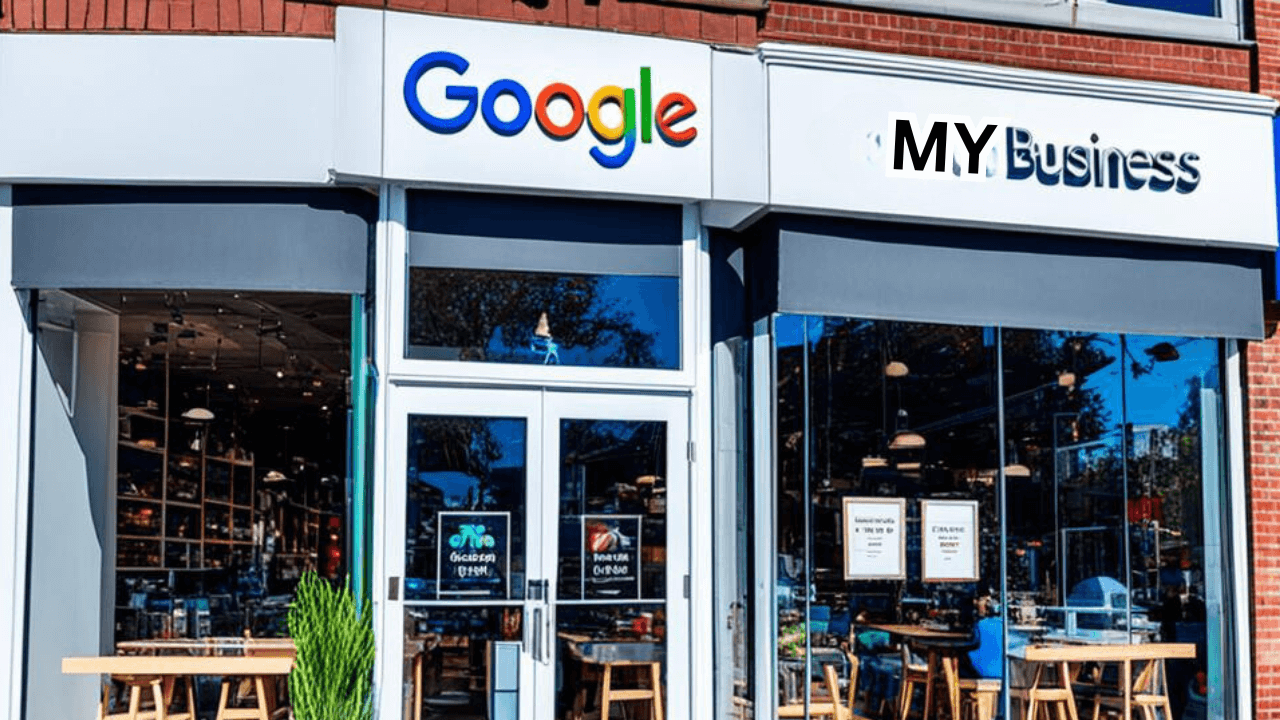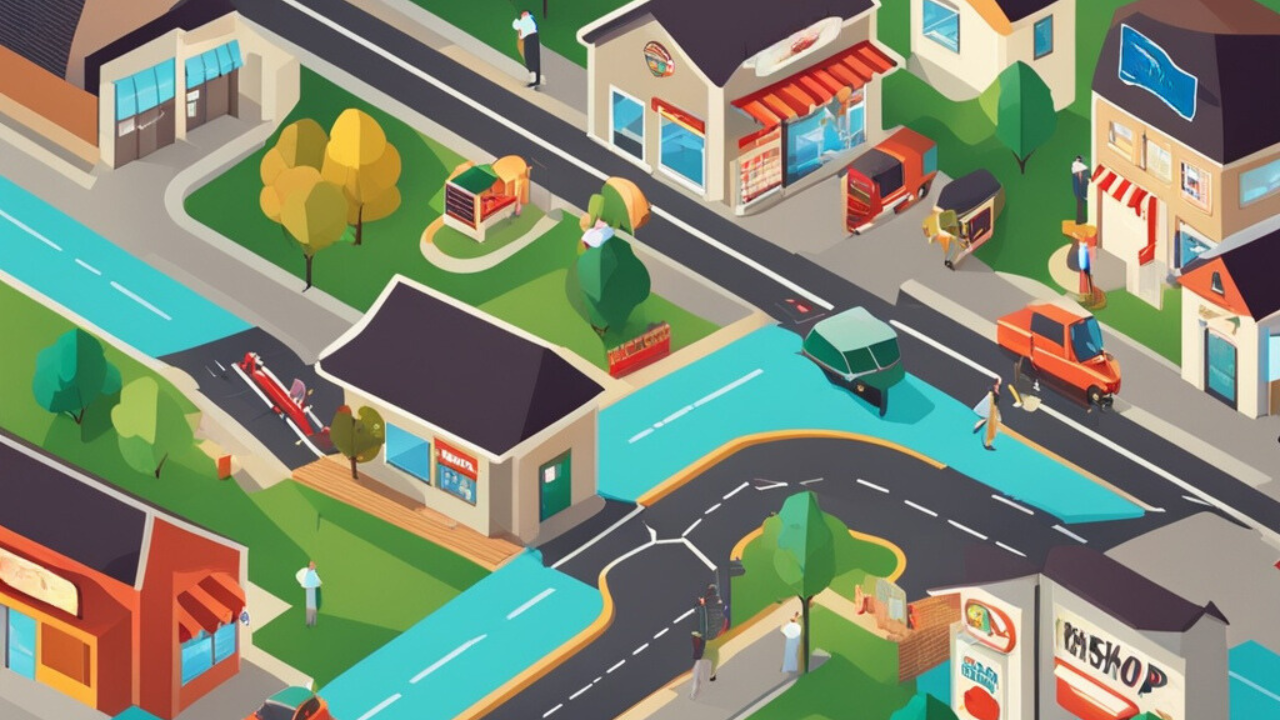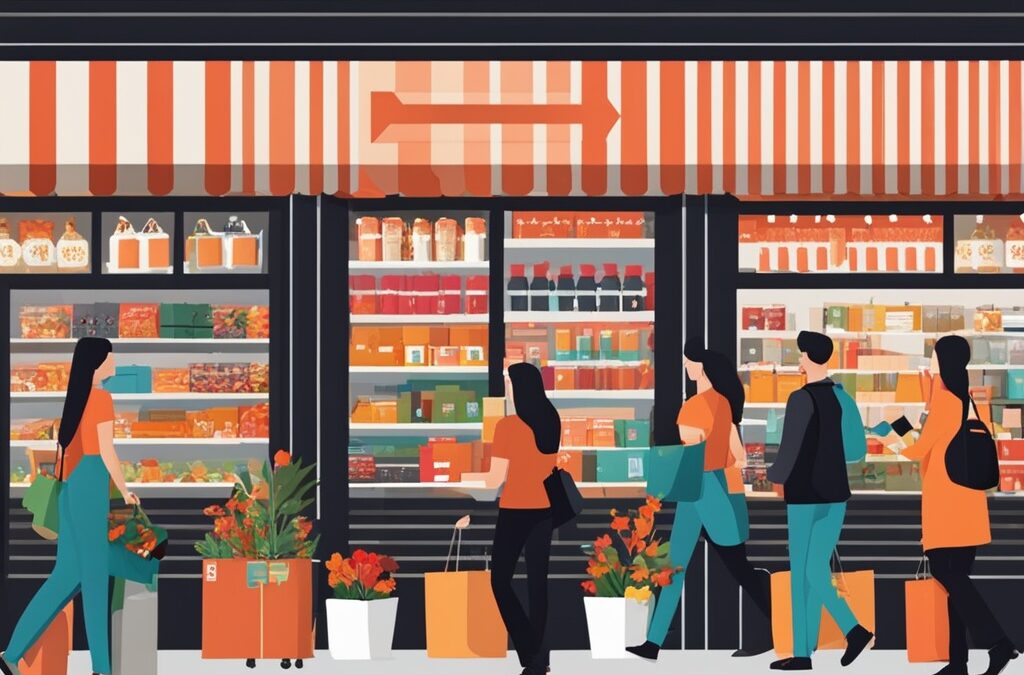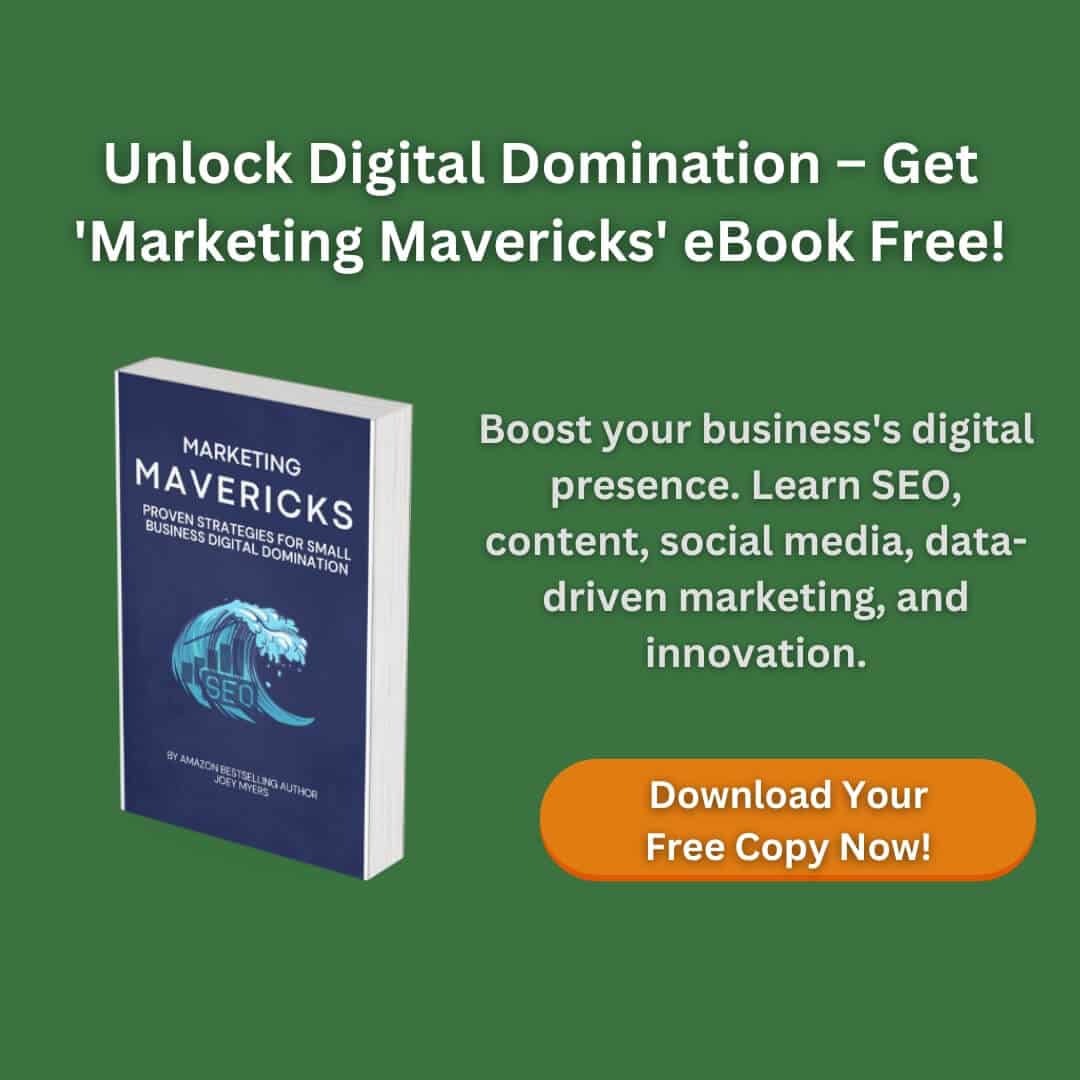Why Your Retail Store Needs Fewer Online Visitors for Higher In-Store Sales
Today, retail stores face a big challenge: catching the eye of tech-savvy shoppers who look online for products and services1. But, there’s a big chance for them to succeed by using local search engine optimization (SEO).
Take Sarah, a small-town boutique owner, who was struggling to get people into her store. She wanted to change that. So, she jumped into local SEO. By making her Google My Business listing better, using local keywords, and working with nearby shops, her store shot up in local search results1. Soon, her store was getting a lot of customers from around the area, all wanting to see her unique products and great service. Sarah’s story shows how powerful retail-focused digital marketing can be.
Key Takeaways:
- Local SEO is key for retail stores to get more people in the door and reach local customers.
- Improving your Google My Business listing can really help you stand out online and in local searches.
- Using local keywords in your marketing can draw in more customers searching for what you offer.
- Working with other local businesses can boost your SEO with backlinks and joint marketing efforts.
- Keeping an eye on KPIs like search rankings, website traffic, and reviews can show how well your local SEO is doing.
Understanding the Importance of Local SEO for Retail Businesses
Local SEO is key to getting more people to visit retail stores and making them more visible online. By making a business easy to find in local searches, store owners can reach customers nearby. This makes it simpler for people to find and visit the store. Local SEO strategies help improve a store’s reputation and trust in the community. This leads to more sales and a growing customer base.
Key Takeaways
Here are the main points about why local SEO is important for retail businesses:
- 76% of local searches from a mobile phone lead to the person visiting the physical location within the same day2.
- Over 52% of online traffic comes from mobile devices, with many users seeking local services and products2.
- Voice search is getting more popular, so optimizing for voice queries is a must2.
- AI is changing local SEO by analyzing data, predicting trends, and making customer experiences more personal2.
- Small businesses using local SEO have seen more foot traffic and sales2.
- Franchises using local SEO have gotten higher rankings in local searches and attracted more customers2.
Local SEO is a cost-effective way for retail businesses to market to their local audience. It helps bring more people into the store than traditional ads3. By optimizing for local search, stores can become more visible, respected, and engaging in their community3.
For retail businesses, understanding local SEO is vital to stay ahead and succeed locally3. By using a full local SEO strategy, stores can open up new opportunities. They become the top choice for their community’s shopping needs3.
Optimizing Google My Business for Retail Stores
Improving your retail store’s online presence with Google My Business (GMB) is key for local SEO. By sharing correct and detailed business info, you make it easier for potential customers to find and visit your store4.
Start by making sure your GMB listing has your store’s address, phone number, hours, and quality images. This makes searches for “open now near me” more precise and useful4. Also, think about using local inventory ads to show off what you sell. This can bring online shoppers to your store4.
- Optimize your GMB profile with complete and accurate business information to improve local search visibility5.
- Encourage satisfied customers to leave positive reviews, as these can significantly impact your store’s local ranking and attractiveness to potential shoppers5.
- Respond to customer reviews, both positive and negative, to show you care about giving a great shopping experience5.
- Use smart bidding strategies, like those for store visits or sales, to make your digital marketing more effective and bring more people to your store4.
By always keeping and improving your GMB profile, you can boost your store’s online presence. This leads to better local search rankings and more customers coming to your store5.

“Accurate and complete GMB listings are essential for retail stores to be found by local consumers searching for products and services in their area.”
Leveraging Local Keywords and Content Marketing
Effective local SEO starts with finding the right keywords. Retailers should look into local keyword research to find terms that matter to their local customers6. This makes them more visible in local searches and draws in people looking for products or services nearby.
Using7 location-specific content also helps a lot with local SEO. Writing blog posts and guides for the local area shows the business is a trusted source6. Getting7 customer reviews and social media posts can also make the business more visible and credible.
Incorporating Local Keywords
8 Relevance, distance, and prominence are key for local SEO. Retailers should use8 long-tail keywords and8 “store + city” keywords to get more targeted traffic and sales8. Tools like Google Keyword Planner and Google Trends help find the best local keywords.
8 Looking at what competitors do with tools like Moz Local and SEMrush can also help. It shows which local keywords other businesses use, giving insights for your own strategy6. Using these methods, retailers can grow their online presence and draw in more local customers.
| Local SEO Strategy | Key Benefits |
|---|---|
| Local Keyword Research |
|
| Location-Specific Content |
|
| User-Generated Content |
|
“Leveraging local keywords and creating tailored content for the local community is essential for retail businesses to stand out in a crowded marketplace and attract more in-store traffic.”
By using these local SEO strategies, retail stores can get more online visibility, bring in better leads, and connect better with their local community678.
Boost In-Store Traffic with Local Link Building
Getting more people into your store is key for retail success today. A great way to do this is through local link building. By connecting with local bloggers, news sites, and directories, you can get valuable backlinks. These backlinks help your store show up higher in search results and reach more local people9.
Working with other local businesses can really help too. Hosting events together or writing guest posts can get you backlinks and new customers9. This way, you’re not just reaching your own customers but also bringing in new ones from the community. This can lead to more people coming into your store, which means more sales and getting your brand known.
Using local business directories is another smart move. Make sure your store’s info is correct and current on these directories. This makes it easier for people to find you online9. And that means more visits to your store and more sales.
| Tactic | Benefit |
|---|---|
| Outreach to local bloggers and news sites | Improved search engine rankings and broader local exposure |
| Partnerships with other local businesses | Mutually beneficial backlinks and access to new customer bases |
| Optimizing local business directories | Enhanced online visibility and easier customer discovery |
Using these local link building strategies can really help your store. It can increase foot traffic, strengthen your online presence, and boost sales and revenue9. The important thing is to build real connections in your community and add value for customers and partners.

“Successful local link building strategies can make a significant difference in driving in-store traffic and overall business growth for retail establishments.”
Optimizing for Mobile and Voice Search
More people use mobile devices and voice-activated assistants to find local businesses. Making your site work well on mobile and for voice is key for stores to connect with locals10.
Ensuring Mobile-Friendliness
Since 76% of local searches on mobile lead to a store visit the same day10, having a site that’s easy to use on phones is a must. Stores need to make sure their websites work well on small screens, load quickly, and are easy to navigate10. Google’s PageSpeed Insights can check how fast your site loads and suggest ways to make it better10.
Checking how people interact with your site through bounce rate, session length, and voice search conversions gives you clues about how well you’re doing10. By looking at this data, marketers can improve their content to better match what voice search users want, leading to more visits and sales10.
- Make your content easy to understand and answer common questions to catch voice search users10.
- Get good reviews to show up more in search results10.
- Write content in an easy-to-read style to give quick answers10.
- Use Google Search Console to see how your site does with voice search10.
As mobile optimization and voice search optimization keep getting better1112, stores need to update their marketing to fit the new ways people search and shop1112.
“The future of search is voice, and the future of voice is local.” – Mike Blumenthal, Co-Founder of GetFiveStars
| Metric | Value |
|---|---|
| Smart speaker sales in 2020 | Over 150 million units11 |
| Unique mobile internet users in 2020 | 4.28 billion11 |
| Voice searches per month in 2018 vs. 2022 | 1 billion vs. 13 billion11 |
| Global ecommerce sales in 2020 | $4.28 trillion11 |
Advanced Local SEO Strategies for Retail Businesses
For retailers looking to increase foot traffic, advanced local SEO strategies can be a big help. Using schema markup makes your business info clear to search engines, boosting visibility and trust13. Also, geo-targeted PPC ads can quickly bring people to your site for special deals13.
It’s important to keep an eye on how your SEO is doing with tools like Google Analytics and Search Console13. Regularly updating your site with new keywords keeps it relevant and visible in local searches13.
- Make your Google My Business profile stand out with photos and timely updates to get noticed in local searches14.
- Add local keywords to your site’s content and meta descriptions to draw in local search traffic14.
- Build a strong local backlink profile by working with other local businesses and groups14.
- Optimize for voice search by using long-tail keywords and natural language as voice searches grow14.
- Create content about local events and community activities to improve your SEO and connect with your audience14.
Make sure your website works well on mobile devices, as this is key for local businesses14. Using structured data markup with Schema.org helps search engines understand your content better14.
Handling online reviews well and engaging with your community on social media boosts your reputation and visibility14. Building local partnerships can also help you stand out14.
| Local SEO Ranking Factors | Importance |
|---|---|
| Prominence | Key factor, emphasizing trustworthiness and accuracy of content13 |
| Proximity | Most critical ranking factor, especially for brick-and-mortar stores13 |
| Search Types | Non-geo-modified, geo-modified, and “near me” searches are common13 |
| Local Pack Results | Appear above organic results in local searches, playing a significant role13 |
By using these advanced local SEO tactics, retail businesses can get more online visibility, bring in more customers, and build a loyal local following131415.
“Balancing efforts between local pack and organic results can enhance overall visibility.”13
Local SEO is an ongoing process that needs constant checking and tweaking15. By keeping up and adjusting your strategies, you can make the most of your local SEO efforts and increase foot traffic to your store15.
The Cost-Effectiveness of Local SEO for Retail Stores
Local SEO is a smart choice for retail businesses. It targets the right audience, increasing the chance of turning them into customers16. This focused approach means a better return on investment and helps small businesses stretch their marketing dollars further.
Now, more people search for local products and services online17. In fact, 46% of Google searches are for something in a specific area17. And when they use “near me” searches, 76% end up visiting a store, showing how crucial local SEO is for foot traffic.
Local SEO lets businesses see how well it works16. With tools like Google Analytics, retailers can track their local SEO efforts. This helps them make smart changes for better results.
After the pandemic, more people want to shop at local stores17. This makes local SEO even more valuable17. With 56% of U.S. consumers searching for local businesses on mobiles, optimizing for local search is key to reaching your audience and seeing results.
By using local SEO, retailers can craft a marketing plan that’s both targeted and cost-effective16. They can improve their Google My Business listings and run ads on social media to reach people nearby. The options for affordable local ads are many.
Local SEO Success Stories and Case Studies
Small businesses and franchises have seen big wins by using smart local SEO strategies18. A small home decor store in Seattle got 45% more website visitors and 30% more people coming into their store. This was after they made their Google My Business listing better and asked happy customers to leave reviews online19. Café Oasis saw a 40% jump in people coming in within three months of starting their Local SEO efforts. Dental Care Excellence got more appointments within six months of their Local SEO plan.
These stories show how local SEO can really help retail businesses19. The Dubai Boutique saw online sales go up by 50% in a year with Local SEO. Dubai Bites got 35% more reservations and takeaway orders in six months with Local SEO20. A small café in Chicago got 300% more local search visibility in six months by optimizing their Google My Business profile. They also saw a 40% increase in revenue after using Local SEO strategies.
These success stories prove the power of local SEO. It boosts online visibility, builds trust, and drives sales for retail businesses.
Lessons Learned from Local SEO Success Stories
- Optimize Google My Business listings to improve local search rankings and visibility
- Encourage positive customer reviews to build trust and credibility
- Utilize hyperlocal targeting and content to reach customers in specific neighborhoods
- Invest in Local SEO strategies for long-term, sustainable growth
| Business | Local SEO Impact |
|---|---|
| Small Home Decor Store | 45% increase in website traffic, 30% increase in foot traffic18 |
| Café Oasis | 40% increase in foot traffic within 3 months19 |
| Dental Care Excellence | Surge in appointment bookings within 6 months19 |
| Dubai Boutique | 50% increase in online sales within 1 year19 |
| Dubai Bites | 35% increase in reservations and takeaway orders within 6 months19 |
| Small Café in Chicago | 300% increase in local search visibility within 6 months, 40% increase in revenue20 |
These stories show that local SEO can change the game for retail businesses. It helps them grow their online presence, attract more customers, and increase sales. By using smart digital marketing and local SEO, small businesses and franchises can get amazing results and beat their competitors.
Common Mistakes to Avoid in Local SEO for Retail
In the retail world, local SEO is key to drawing in nearby customers and boosting in-store visits. Yet, many retailers miss out on important steps that affect their search performance. Ignoring local keywords, having inconsistent NAP info, and overlooking online reviews are big no-nos21.
Using specific neighborhood or landmark keywords can draw in a more targeted local crowd21. If your NAP info doesn’t match across all platforms, it confuses customers and search engines, hurting your visibility and trust21. Also, not paying attention to reviews is a mistake, as they help build trust and show you’re active and reliable21. It’s important to encourage reviews and respond to them, both the good and the bad21.
- Nearly 32% of companies don’t show their locations online or on their sites21.
- About 46% of Google searches have a local intent, showing many customers look for products and services nearby21.
- Ulla Popken boosted search views and clicks by adding “plus-size” to their listings21.
- Jonak builds strong customer ties and boosts SEO by answering reviews quickly21.
- Ulla Popken uses Google tags like ‘women-led’ and ‘LGBTQ+ friendly’ to improve their spot21.
- Okaïdi saw more clicks on their Google Business Profile after updating their photos and services with Uberall CoreX21.
- BP saw better rankings by providing detailed service info21.
- Sephora got 33% more driving directions and 137% more search views after improving their online presence21.
- Ulla Popken manages 230 local landing pages with Uberall CoreX, helping search engines and customers21.
- Creating GBP FAQs can boost search rankings and make customers happier by answering common questions and cutting down on support21.
By avoiding these common mistakes and using smart local SEO tactics, retail businesses can greatly improve their online visibility, draw in more foot traffic, and increase sales22.
| Metric | Value |
|---|---|
| 97% of people searching online look for local stores and businesses | 22 |
| Building a blog can lead to a 126% increase in leads for small businesses | 22 |
| Nearly 9 out of 10 people (89%) go through reviews before purchasing or visiting | 22 |
| 15 different payment options are available, with PayPal being the most widely used | 22 |
| Nearly 15 different payment options are available for online stores | 22 |
| Human brains process visual information 60,000 times faster than text | 22 |
| Time-limited offers work as a driving force for consumers | 22 |
| 9 out of 10 people read reviews before making a purchase or visiting a store | 22 |
| Backlinks are crucial for higher rankings in search engines | 22 |
| Social media can influence backlinks and visibility | 22 |
| Google Ads offers local advertisement solutions | 22 |
| Competitor analysis can help in identifying strategies that work for the target audience | 22 |
By tackling these common local SEO issues, retail businesses can boost their online visibility, draw in more in-store traffic, and ultimately drive sales.
“Not paying attention to online reviews can really hurt a retail business’s credibility and trust with customers. It’s key to respond to both good and bad feedback to build strong local ties.”
Conclusion
Local SEO is a big win for retail stores wanting to increase in-store traffic and community presence23. By using smart local SEO strategies, like making Google My Business better, using local keywords, getting local links, and optimizing for mobile and voice search, stores can get more visible online23. This helps them draw more customers to their stores23.
Stores that go for local SEO can grow their business and build strong customer ties24. Things like being active on social media, working with nearby stores, and having seasonal events help with community engagement and long-term benefits for the store24. By making their online presence strong and using local SEO, stores can increase foot traffic and have a lasting impact in their area2324.
For local SEO success in retail, having a detailed and well-planned strategy is key. By sticking with these strategies, retail businesses can see big, lasting effects on their in-store traffic and growth2324.





